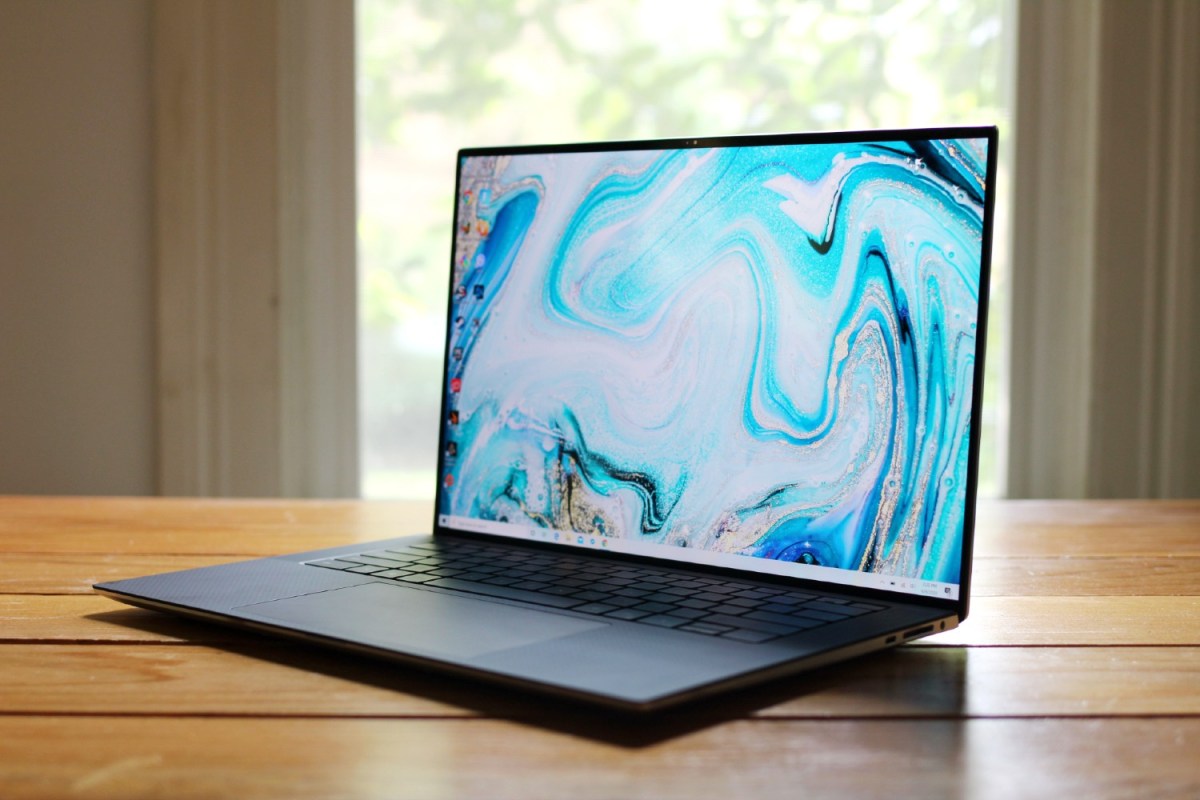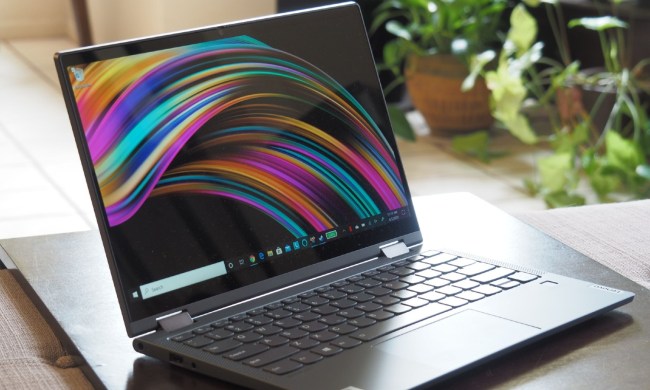“The Dell XPS 15's elegant design and impressive performance make it an excellent choice for creative professionals.”
- Efficient design
- An extra Thunderbolt 3 port
- World-class display
- Excellent performance
- Expensive
Dell struck gold with the XPS 15. It was the perfect alternative to the MacBook Pro 15-inch, a laptop plagued with issues ranging from thermal throttling to unreliable keyboards.
But now that Apple has the MacBook Pro 16-inch, the ball is back in Dell’s court. Its new XPS 15 is the answer. With tweaks to just about every aspect of the design, this is the biggest overhaul to the XPS 15 since its debut.
Is this the ultimate premium laptop for creatives?
Design

Familiar yet fresh. That’s how Dell describes the new XPS 15, and I have to agree.
The look of the Dell XPS 15 hasn’t changed for almost five years. A redesign has been a long time coming, especially with all the advancements the XPS 13 has received over the years.
Nearly every aspect of the XPS 15 has been updated in some way. The only design elements that have remained intact are the black carbon-fiber weave used in the palm rests and the aluminum on the lid. The use of aluminum and carbon fiber keeps the XPS 15 looking like an XPS product, but that’s where the familiarity stops.
The thing you’ll notice first is the display. The XPS 15 now has a 16:10 aspect ratio, for a slightly taller screen. I really like this choice. It made a difference on the XPS 13, and it makes an even larger difference on the larger XPS 15.
More screen and less wasted space is always good.
The screen measures 15.6 inches and packs in 3,840 x 2,400 resolution. That’s more pixels than even a conventional 4K screen, and a higher pixel density than the MacBook Pro 16-inch. Whew.
Of course, a larger screen typically means a larger laptop in general. Not here. The new laptop’s dimensions are roughly the same as the previous model despite its larger display. It still weighs in at just 4 pounds (or 4.5 for the version with the larger battery) and is 0.71 inches thick. More screen and less wasted space is always good.

That emphasis on efficiency applies to other areas as well. The keyboard uses a wider, more comfortable layout with larger keycaps and plenty of travel. The touchpad is significantly larger, now matching the size of the MacBook Pro 16-inch. You needn’t worry about it being too large, however — the palm rejection is as good as it gets.
My unit had an issue with the touchpad. When pressed, it would move slightly, as if it were working, but then wouldn’t register a click. I learned I had to press harder to make it work as expected. It’s an annoyance in an otherwise excellent tracking experience.
There’s no question that some of the laptop’s design elements take their inspiration from the MacBook Pro 16-inch, but it doesn’t feel like an imitator. The look is XPS, through and through.
The port selection this time has been cut down, replacing the HDMI and USB-A ports with plenty of USB-C. Two of those are Thunderbolt 3 ports and one is a standard USB-C 3.1 port. Fortunately, Dell has kept around the SD card slot, which is a huge boon for creatives. No doubt some will miss their legacy ports for peripherals like a wired mouse, but embracing more future-proofed, powerful ports like Thunderbolt 3 is never a bad thing.
Display and speakers

Dell boasted about its new speakers, which are now located right on the keyboard deck. The placement provides a much more satisfying audio experience than in years past, and there’s more bass here than I’ve ever heard on an XPS product.
That doesn’t mean it competes with the MacBook Pro 16-inch, though. It still pales in terms of clear bass and full mids. Even against the MacBook Pro 13-inch, the XPS 15’s speakers are more tinny.
If you’re a video or photo editor, you’ll love this screen.
The display and speakers have been revamped, both for the better. The larger panel Dell has chosen is as good as they come. While it’s LED (not OLED), it scored a perfect 100% in both sRGB and Adobe RGB color spaces. It also has one of the most color-precise screens I’ve seen — even beating the MacBook Pro 16.
Though I miss the deep blacks and high peak brightness of the OLED screen (which is no longer offered), this is still one of the best laptop displays I’ve ever tested. If you’re a video or photo editor, or even a graphic designer, you’ll love this screen.
Of course, you won’t get this high-resolution screen in the base model. It’s a $294 upgrade to make the jump up from 1,920 x 1,200 — but for creatives, it’s a must.
Battery life

Thanks to that insanely high-resolution screen, battery life takes a hit. Dell has stuffed a large 86 watt-hour battery into this model, but the 4K+ XPS 15 still only lasts for around 6 hours on a light workload. Don’t expect to spend all day away from an outlet.
The 1080p version of the XPS 15 has been a record-setting battery life champ in the past, but this 4K model will suck away battery like nobody’s business.
It’s especially noticeable if you’re doing any kind of heavy work. I tested that with the Basemark benchmark, which pushes the CPU hard, and it only lasted under 3.5 hours. That’s not unusual for a 15-inch 4K laptop, but it’s something to be aware of.
Against the MacBook Pro 16-inch and other 4K laptops, though, the XPS 15’s battery life is on even footing.
Performance
The performance of the XPS 15 has always been its most important feature. Unlike laptops like the Surface Laptop 3 15 or the LG Gram 15, the XPS 15 isn’t just a bigger screen. It’s more power. It has a 45-watt processor with up to eight cores and 16 threads. It also has an option for a discrete graphics card and tons of memory and storage.
My review unit came with the Intel Core i7-10875H, Nvidia GTX 1660 Ti, 16GB of RAM, and a 512GB of SSD. That’s one of the higher-end configurations, of course, costing $2,200. That’s expensive, yes — though it’s $500 cheaper than a similarly configured MacBook Pro 16-inch.

The system benchmarks quite well. In Cinebench R20, it stomps the MacBook Pro 16-inch, and last year’s XPS 15. The gap is even wider in Geekbench 5. That lead doesn’t hold up in real-life performance, though. It’s 5% slower than the MacBook Pro in video encoding in Handbrake, and 15% behind last year’s XPS 15.
A good challenge for both discrete graphics and a powerful processor is video exports in Adobe Premiere Pro. It took 8 minutes and 42 seconds to finish rendering a 2-minute 4K clip to ProRes 422. Compare that to the 9 minutes and 27 seconds it took for the Razer Blade, which comes with a six-core processor and a beefy Nvidia RTX 2070 for graphics.
That’s solid performance, though it’s not earth-shattering. The XPS 15 I reviewed last year finished that same task in just under 5 minutes, thanks to the Core i9-9880HK. It was a faster, completely unlocked processor, and the 32GB of RAM that came in my review unit didn’t hurt either. The latest 10th-gen version of this unlocked chip hasn’t yet shipped in the XPS 15, though Dell says it’s coming soon.
While the XPS 15 is a great performance laptop, it’s also a fantastic 15-inch laptop in general.
The Microsoft Surface Book 3 was another laptop that beats this XPS 15 in terms of video editing. Despite having only a quad-core processor, its beefy graphics let it dominate in Premiere rendering.
The XPS 15 starts at $1,300 for the base model, which only gets you a quad-core processor, integrated graphics, and 8GB of RAM. That model will not perform nearly as well as the model I tested, but it should be more than adequate for buyers who don’t have a specific, demanding use case in mind. While the XPS 15 is a great performance laptop, it’s also a fantastic 15-inch laptop overall, and the base model is a good fit for users who want a top-tier laptop for everyday use.
Gaming performance

The XPS 15 has never been a gaming laptop, and that hasn’t changed. The system still prioritizes processor performance, which doesn’t let the GPU shine in the same way a gaming laptop might.
The upgrade from the Nvidia GTX 1650 to the 1650 Ti, though, does provide a hearty bump in terms of game performance that I was glad to see. It was 105 to 20% faster than the previous model, and can play most games at at least 60 frames per second (FPS). In Battlefield V, I needed to reduce settings to Medium to get there, but in Fortnite and Civilization VI, you can happily play at max settings and still hit 60 FPS.
This is an important number because the screen is locked at a 60Hz refresh rate. Anything over 60 FPS won’t be seen.
The only game that proved unplayable at max settings was Assassin’s Creed Odyssey. At Ultra High, it only hit 26 FPS, and at High (the game’s medium setting), it played at 47 FPS.
There are plenty of more powerful gaming laptops out there. Laptops with more graphics options like the Surface Book 3 or Dell G5 SE are better gaming experiences, too. But for those who want to use the XPS 15 for some gaming on the side, it does the job.
Our take
The Dell XPS 15 is the best 15-inch laptop you can buy. The design is gorgeous, the screen is out of this world, and the performance is impressive. The eight-core Intel Core i7 model I reviewed isn’t the most powerful version of this laptop, but with the Core i9 on the way, the XPS 15 will likely be one of the most powerful video-editing laptops you can buy too. It’s not cheap though. To get a model similar to the one I reviewed, you’ll easily be spending over $2,000 for the combination of a premium chassis, a color-accurate 4K display, and powerful internals.
Are there any alternatives?
If you want an even more powerful XPS laptop, wait for the Dell XPS 17. Not only does it have a larger screen, it also comes with a powerful Nvidia RTX 2060 graphics card for even better performance.
The MacBook Pro 16-inch is a close alternative, though it’s quite a bit more expensive.
How long will it last?
The Dell XPS 15 should last you at least four or five years. Everything from the components inside to the durability of the chassis is top-notch. There’s nothing special about the warranty though. It’s still just a standard one-year hardware warranty, though Dell does offer premium care packages like extended support up to four years or accidental damage service.
Should you buy it?
Yes. It’s the best 15-inch laptop you can buy, and an excellent choice for creative professionals who need significant power under the hood.




